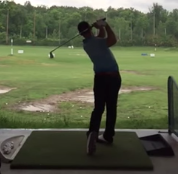IGNORED
Shorter clubs, steeper plane?
Note: This thread is 5178 days old. We appreciate that you found this thread instead of starting a new one, but if you plan to post here please make sure it's still relevant. If not, please start a new topic. Thank you!
-
Topics Being Discussed Right Now on The Sand Trap
-
- 8,447 replies
- 379,743 views
-
Low Spinners (Viktor Hovland, AoA) 1 2 3
By iacas, in Instruction and Playing Tips
- spin loft
- low spinner
- (and 2 more)
- 38 replies
- 9,727 views
-
"5 Minutes Daily" Practice Challenge 1 2 3 4 909
By iacas, in Instruction and Playing Tips
- 5 minutes daily
- dedication
- (and 6 more)
- 16,355 replies
- 1,125,077 views
-
- 14 replies
- 1,602 views
-
- 523 replies
- 79,545 views
-









Recommended Posts
Create an account or sign in to comment
You need to be a member in order to leave a comment
Create an account
Sign up for a new account in our community. It's easy!
Register a new accountSign in
Already have an account? Sign in here.
Sign In Now